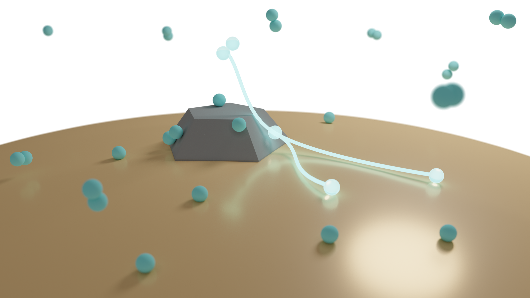The travels of hydrogen over the catalyst surface
Hydrogen spillover is the surface migration of activated hydrogen atoms from a metal catalyst particle, on which molecular hydrogen dissociates, onto the catalyst support. It is of high importance for heterogeneous catalysis, hydrogen storage materials, and fuel cell technology. Its occurrence on metal oxide surfaces is established [1], yet questions remain about how far from the metal center spillover is reaching. Achieving spatial understanding of this process remains a challenging quest since the relevant materials are usually complex nanomaterials. We chose the approach to translate the complex structure of metal oxide catalysts into planar model representations [2]. This approach allows the use of surface sensitive techniques that otherwise would not provide sufficient spatial information.
By employing X-ray photoelectron emission spectroscopy (XPS) and microscopy (XPEEM), both methods which are highly sensitive to the chemical state of the surface, we were able to gather direct evidence that spillover is occurring over several microns across the oxide surface [3]. In this short communication, the propagation of hydrogen across the metal oxide originating from deposited platinum will be presented in a time resolved movie with spatial resolution of the chemical states of the oxide surface.
These findings and the derived understanding at which temperatures hydrogen spillover in affecting the surface will help to improve and exploit the process of hydrogen spillover for application.

[2] Karim W., Spreafico C., Kleibert A., Gobrecht J., Vandevondele J, Ekinci Y., van Bokhoven J. A., Nature, 2017, 541(7635), 68-71.
[3] Beck A., Frey H., Kleibert A., van Bokhoven J. A. in preparation